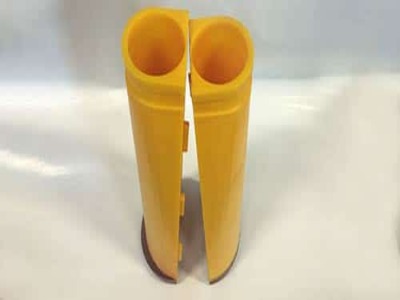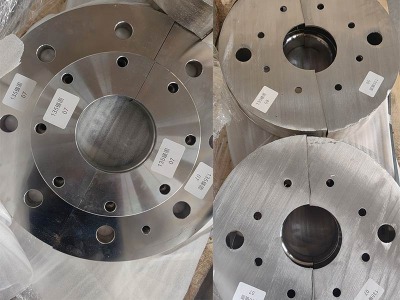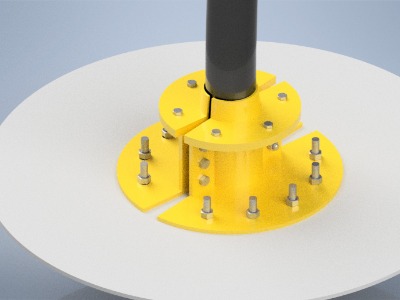The bend restrictor for the submarine communication cable system is a key component to protect the cable. It prevents mechanical damage by limiting the bending radius of the cable, adapts to a complex marine environment, and prolongs the service life of the cable. It uses materials such as polyurethane, which have high strength and corrosion resistance, and is widely used in submarine communication cable laying, offshore wind power, and offshore oil and gas platforms. With technological advances, bend restrictors will continue to improve their performance and provide more reliable protection for submarine communications.
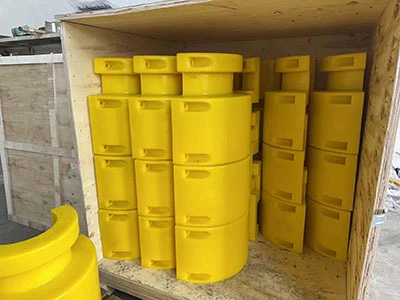
Functions and roles of bend limiters
• Prevent mechanical damage
The internal structure of submarine communication cables is complex, including optical fibers, insulation layers, armor layers, etc. Excessive bending may cause micro-bending or even breakage of the optical fiber, affecting the quality of signal transmission; repeated bending of the metal armor layer will accelerate metal fatigue and reduce tensile strength. The bend restrictor uses a rigid or semi-rigid structure to forcibly limit the bending radius of the cable to ensure that it is always within a safe range, usually 10-20 times the diameter of the cable.
• Adapt to a complex marine environment
In terms of dynamic stress, strong ocean currents will push the cable to swing repeatedly, and the bend restrictor can reduce the swing amplitude and avoid fatigue damage. In offshore areas, when the ship's anchor chain accidentally drags the optical cable, the limiter can disperse the stress and prevent local excessive bending. In terms of static stress, when the optical cable crosses the trench or rocks, the limiter can support the optical cable to avoid natural sagging and bending due to its weight.
• Extend the service life of the optical cable
Long-term dynamic bending will cause material fatigue, and the bend limiter significantly extends the service life of the optical cable by suppressing the cumulative effect of small bends. In addition, the bend limiter is usually made of corrosion-resistant materials such as polyurethane and stainless steel, which protects the mechanical structure while resisting seawater erosion.
Technical principle of the bend restrictor
• Mechanical bend restrictor
The bend restrictor uses modular units (such as Haversian structure) in series to form a chain structure. When an external force acts on the device, the modular units bite and lock to form a fixed locking bend radius, forcibly limiting the deformation of the optical cable and ensuring that its bend radius is not less than the minimum allowable bend radius.
• Dynamic buffering
Bend limiters usually use highly elastic materials such as polyurethane, which can absorb impact energy and reduce direct damage to the optical cable caused by stress concentration, thereby improving the reliability of the optical cable in complex marine environments.
Materials and design of bend restrictors
• Main material
Polyurethane is a common material for the main body of the bend limiter. It has the characteristics of high strength, wear resistance, seawater corrosion resistance, and aging resistance, which can effectively extend the service life of the bend restrictor. In addition, the embedded steel cylinder or metal interface usually uses duplex stainless steel, aluminum alloy, and other materials to enhance local stiffness and prevent corrosion.
• Sealing technology
In order to ensure waterproofness when the module is closed, the bend limiter adopts a sealing gasket design, usually made of silicone or rubber. This design can effectively prevent seawater from infiltrating and avoid corrosion of the optical cable.
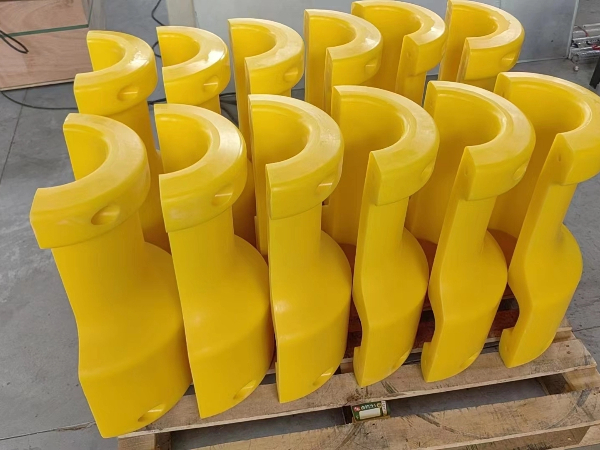
Application scenarios of bend restrictors
• Laying of submarine communication cables
During the laying of submarine communication cables, bend limiters are often installed at the contact points between optical cables and equipment (such as tensioners and pulleys) to prevent instantaneous bending stress concentration, thereby protecting the integrity of the optical cable during the laying process.
• Offshore wind power
In the field of offshore wind power, bend restrictors are mainly deployed at the lower port of the J-tube, in conjunction with sealing devices or center clamps, to prevent submarine cables from being suspended or damaged by friction at landing points and crossover areas due to water erosion or geological changes.
• Offshore oil and gas platforms
In offshore oil and gas platforms, bend restrictors are used to protect cables at the interface between umbilical cables and rigid structures (such as risers), reduce stress concentration, and avoid cable damage caused by external forces.

